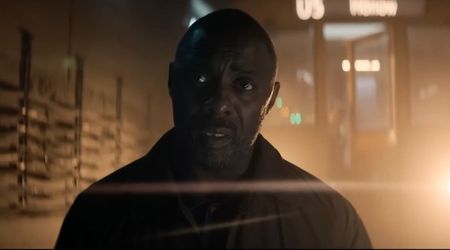'The Mandalorian': What role did Baby Yoda play in Palpatine's resurrection in 'The Rise of Skywalker'?

Spoilers for 'The Mandalorian' Season 2, Episode 4 'The Seige'
One of the biggest mysteries of 'The Mandalorian' may have just been solved and has massive implications for the future of the 'Star Wars' universe. Right from the start, we know that the remnants of the Empire have been after Baby Yoda — or the Child — at all costs. They've sent entire armies after the Child, and up until now, we've only been able to theorize as to why.
With the latest episode of 'The Mandalorian', however, we have our answers, and they're a lot darker than anyone's guess. On a visit back to Navarro to get his ship repaired, the Mandalorian (Pedro Pascal) helps Greef Karga (Carl Weathers) and Cara Dune (Gina Carano) take out an Imperial Base that, for some reason, was not abandoned.
While there, they discover a number of clones in tanks, and a message from a scientist who we last saw extracting blood from the Child. The scientist states that the clones were unable to sustain life — living for a fortnight, at best — until they were able to bolster the clone's life with genetic material from a donor with a high "M-count."
The 'M' here clearly stands for "midichlorians" — the bacteria that are responsible for allowing people access to the Force. Introduced in 'The Phantom Menance', the basic idea is that the higher someone's Midichlorian count, or M-count, the stronger they are in the Force. The Child has proven to have a tremendous connection to the Force, even at a young age, meaning that his M-count must be through the roof.
As for the clones, a close look at them clearly reveals that they resemble Snoke (Andy Serkis), the leader of the First Order who is revealed to have been a failed experiment towards cloning Emperor Palpatine (Ian McDiarmid).
The Empire is enacting Palpatine's fail-safe plan — to resurrect him through cloning, but the process is clearly proving difficult. This is why the Empire needs the Child. With his high M-count blood, they're able to make better and better clones of the Emperor. The means that, in part, Baby Yoda was responsible for the return of Emperor Palpatine.
We know that the Empire was eventually successful in resurrecting the Emperor. We also know that it took them decades to do it. Either they managed to get the Child and use his blood to eventually bring back their Emperor, but took decades to do it or the Mandalorian kept Baby Yoda out of their hands permanently, which is why the Empire took so long to manage a successful cloning process.
Either way, we finally know why the Empire is willing to put all its resources into finding the Child - he is their only hope to restore the Empire they just lost. We now know exactly what the stakes are and exactly why the Mandalorian should do everything he can to keep the Child out of the Empire's clutches for as long as possible.
The next episode of 'The Mandalorian' airs on November 27 on Disney+.










